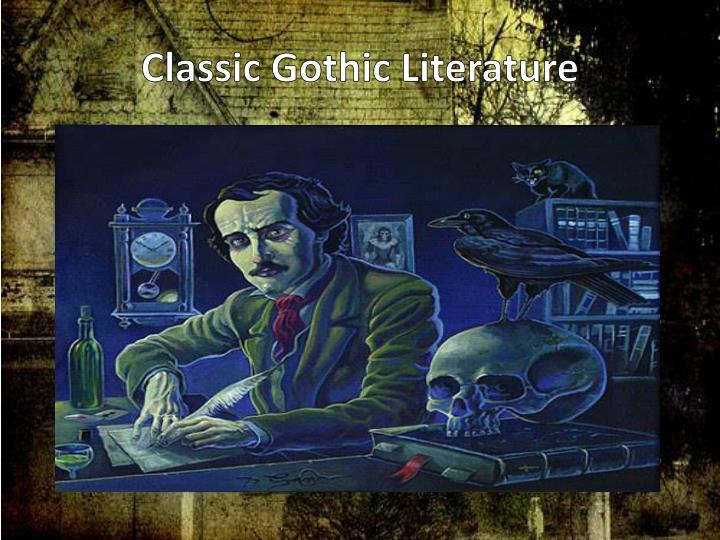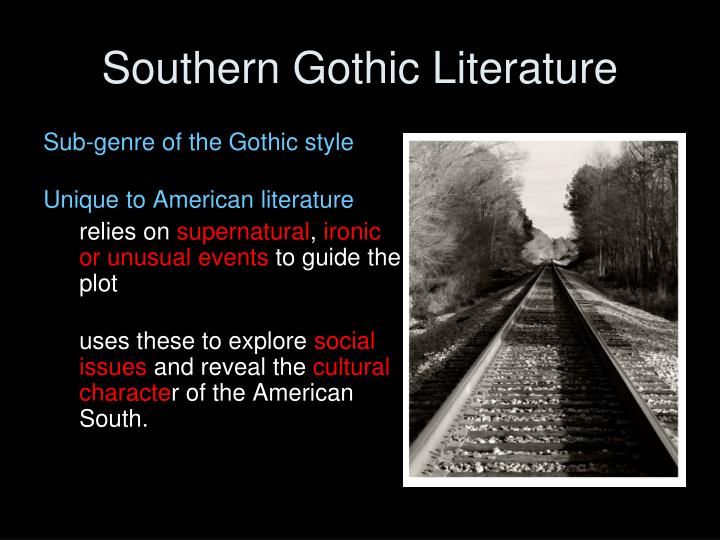
What’s a girl to do then, besides poison the first carpetbagger to cross her path and keep his corpse as her bedmate? Well, that sounds reasonable. Flying South: “A Rose for Emily” by William FaulknerĪrguably the defining Southern Gothic tale, “A Rose for Emily” is William Faulkner’s take on Poe’s themes in “The Fall of the House of Usher.” Emily, an aristocratic maiden of an old Southern family, financially ruined by the loss of unpaid labor following the Civil War, is forbidden to marry anyone not meeting her haughty father’s standards.

Southern Gothic writers pull no punches regarding the difficult truths of the region’s past (and sometimes, present).

Southern Gothic writers expose the cognitive dissonance and contradictions of a mindset that tries to square racism, historical pride, and a belief in an all-loving Christ who wouldn’t condone slavery, with aristocratic classes and racism. Slavery’s legacy haunts Southern Gothic and contrasts starkly with the biblically driven culture’s belief in the divine and equitable love of Jesus. In Southern Gothic stories, depraved pastors or preachers hark back to the priests and monks of Gothic stories, and impenetrable forests and decrepit mansions stand in for the maze-like, crumbling castles of Europe.Īlthough mythic elements, crime, and class tension abound in Southern Gothic (as in “ Barn Burning” by William Faulkner), racial tension is arguably the genre’s defining characteristic. Their mansions and plantations cannot be maintained without slaves, and their inevitable decline into decay and ruin is a delayed reflection of the corrupt souls of those who profited by exploiting others. Slave owners, enriched by the labor of the oppressed, are the South’s incarnation of depraved aristocrats with absolute power. While Gothic literature warns of abusive religions and aristocracy prevalent in medieval Europe, the post-Civil War South is another place once wealthy because of past abuses. "The Fall of the House of Usher" applies the classic Gothic tropes of decadent aristocracy and ghoulish goings-on to Poe's America in a straightforward, recognizable form but already there are hints of how the genre would evolve in the Reconstruction South. In the end, the house literally falls, and the swamp closes over the bodies and the ruin of the house’s former grandeur, ending the House of Usher and its blighted lords and ladies forever. The aristocratic line of Usher has, in essence, cannibalized itself in the name of genetic purity. They’re the last of their line, and their insanity is the price of refusing to marry and procreate with outsiders. Usher, still a bachelor, is losing (or has already lost?) his mind, and lives with a sickly maiden sister, who moves like a ghost through the halls. “I looked.upon the bleak walls, upon the vacant eye-like windows, upon a few rank sedges, and upon a few white trunks of decayed trees-with an utter depression of soul….” He has come at the request of his old friend Usher, who is isolated, unaccountably fearful, and sick. In Poe’s story, the young hero rides through an oppressive, unnatural swamp encircling a mansion. “The Fall of the House of Usher”, by Edgar Allan Poe, is the short story in which earlier, shocker Gothic novel elements coalesce into an American grotesque Gothic.

The Missing Link: “The Fall of the House of Usher” by Edgar Allan Poe

Once the Gothic made its way to America, those same themes reappeared, with startling and incisive transformations. To that end, traditional Gothic tales contain combinations of depraved monks and priests decaying, maze-like castles that trap innocent maidens and hard-working heroes ghosts or the unsound rattling chains in towers sick aristocrats as the last of their lines and the trap of social status symbolized by dank dungeons and crypts. But these classic Gothic stories focused on a deep suspicion and fear of what that Enlightenment left behind: the unreformed Catholic Church, a corrupt, despotic aristocracy, and the superstitions and injustices they embodied. Gothic lit first came into vogue in the late 18th Century, when rational classicism was admired. Traditional Gothic literature was neither clear-cut ghost story nor horror, but featured grotesque elements that would go on to influence everything from pulp fiction to slasher pics. Today, Fiction Unbounders Lisa Mahoney and Amanda Baldeneaux embark upon a three-part exploration of speculative fiction within the Southern Gothic genre, starting with short stories. Southern Gothic literature is stepping out from the haunted shadows of pecan trees and peach blossoms (and "regional fiction" shelves) into modern must-read lists.


 0 kommentar(er)
0 kommentar(er)
